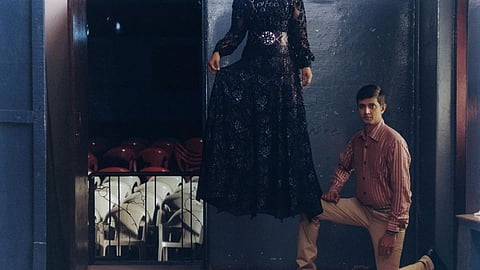
- HOMEGROWN WORLD
- #HGCREATORS
- #HGEXPLORE
- #HGVOICES
- #HGSHOP
- CAREERS
- ABOUT US
- CONTACT US

There’s something unsettling about Bangalore’s usual chaos when it’s suddenly still. In Tara L. C. Sood’s film, 'The Great Mandrake Magic Convention', this stillness is made electric. Renowned magicians from Southern India are performing in sites across the city. It isn’t a conventional gathering, if such a thing even exists for magicians. It’s a staged spectacle that feels more authentic than reality itself.
Sood’s film opens with an electric light flickering on. A man stands cupping a bird in his hands. The accompanying photo series looks as if someone decided to drop a dream into everyday life. The film, which weaves together a series of staged performances, doesn’t shout its themes. Magicians — quirky, proud, and fiercely secretive — set the tone, each scene bursting with color, illusion, and absurdity.
What’s striking about this project isn’t just the magic itself but the way it’s portrayed. It’s not your usual Hollywood sleight-of-hand slickness. Instead, Sood’s magicians have the rough edges of reality. Their tricks feel homemade, sometimes messy, but always earnest.
There’s a particular sequence that stands out: a tribute to the Great Indian Rope Trick. Sood, however, isn’t interested in simply recreating the legend. Instead, she makes the audience feel its impossibility. The camera lingers on a flimsy rope, swaying gently. We never see it come back down, leaving the rest to our imagination. The absence is the trick, and it’s Sood’s wry way of nudging us and asking, "Did you really expect to see magic laid bare?"
In September, the body of work was shown in Vevey, Switzerland next to a small part of Raj Muthaiah’s personal archive. The documents are relics: old posters, faded newspaper clippings, and cryptic notebooks with half-erased illustrations. Sood chooses not to reveal their contents fully, letting the suspense hang. It reinforces the central theme: the true allure of magic lies not in knowing its secrets but in being okay with the mystery.
The series has a sense of humor about itself, refusing to take magic too seriously while honoring its whimsy. Yet, amidst the laughter, there’s an undercurrent of melancholy. Sood captures the sense that magic is both a performance and a plea — an invitation to believe, even for a moment, in a world where logic doesn’t always win. “The Great Mandrake Magic Convention” doesn’t promise answers. Instead, it offers moments: a levitation that lasts just long enough to be plausible; a transposition that’s more confusing than spectacular; and a prediction that’s wrong but somehow feels right.
As you reach the end, you’re left with the distinct feeling that you’ve witnessed something fragile yet stubbornly persistent, like a magician pulling a coin from behind an ear. It's simple, surprising, and deeply satisfying, even if you know it’s just a trick.
